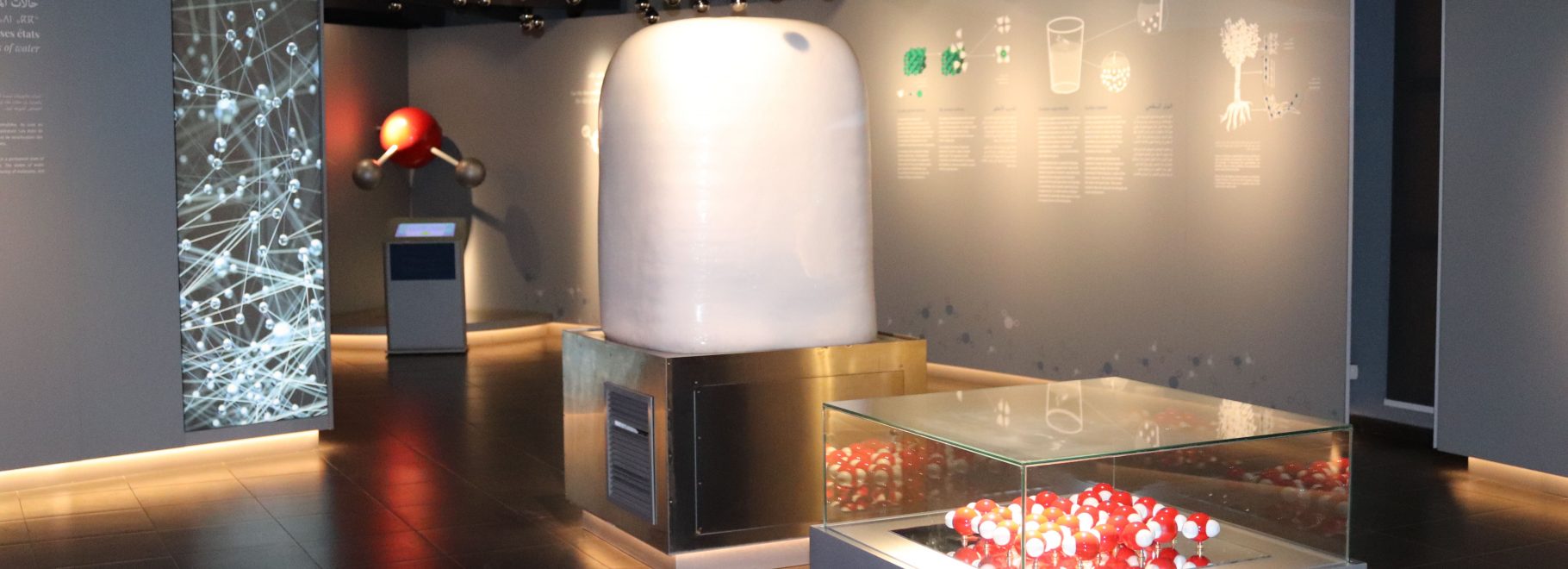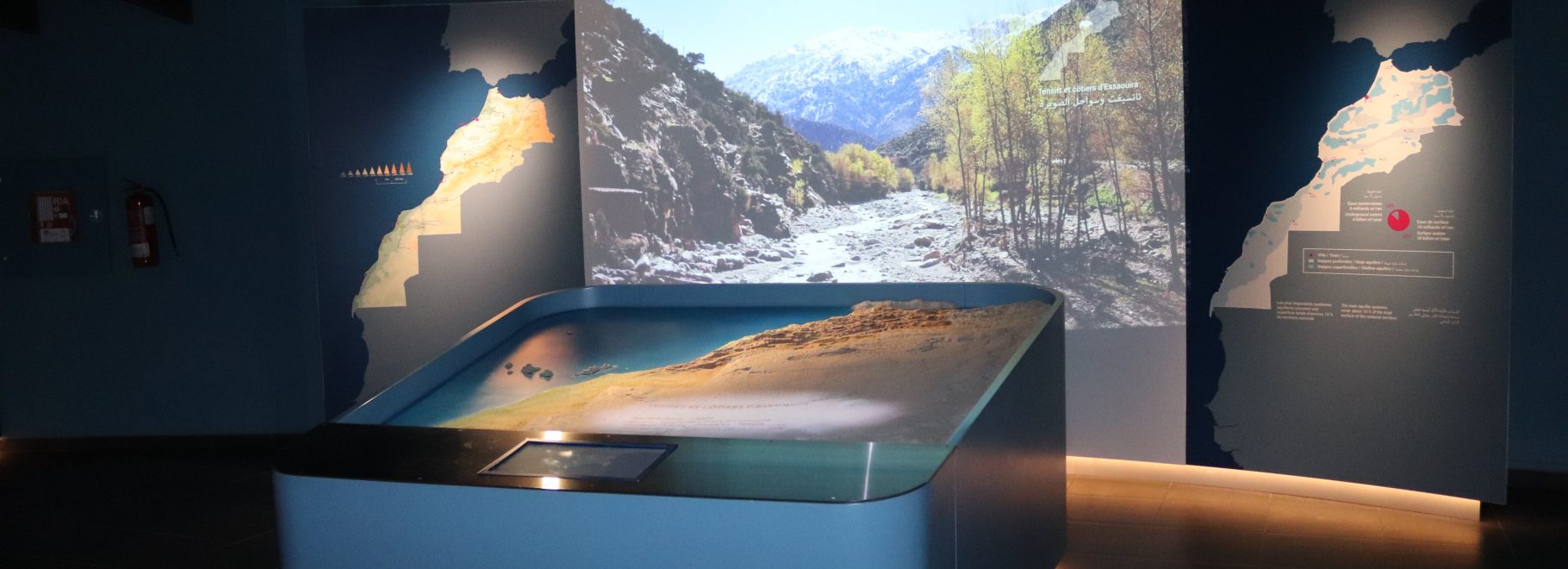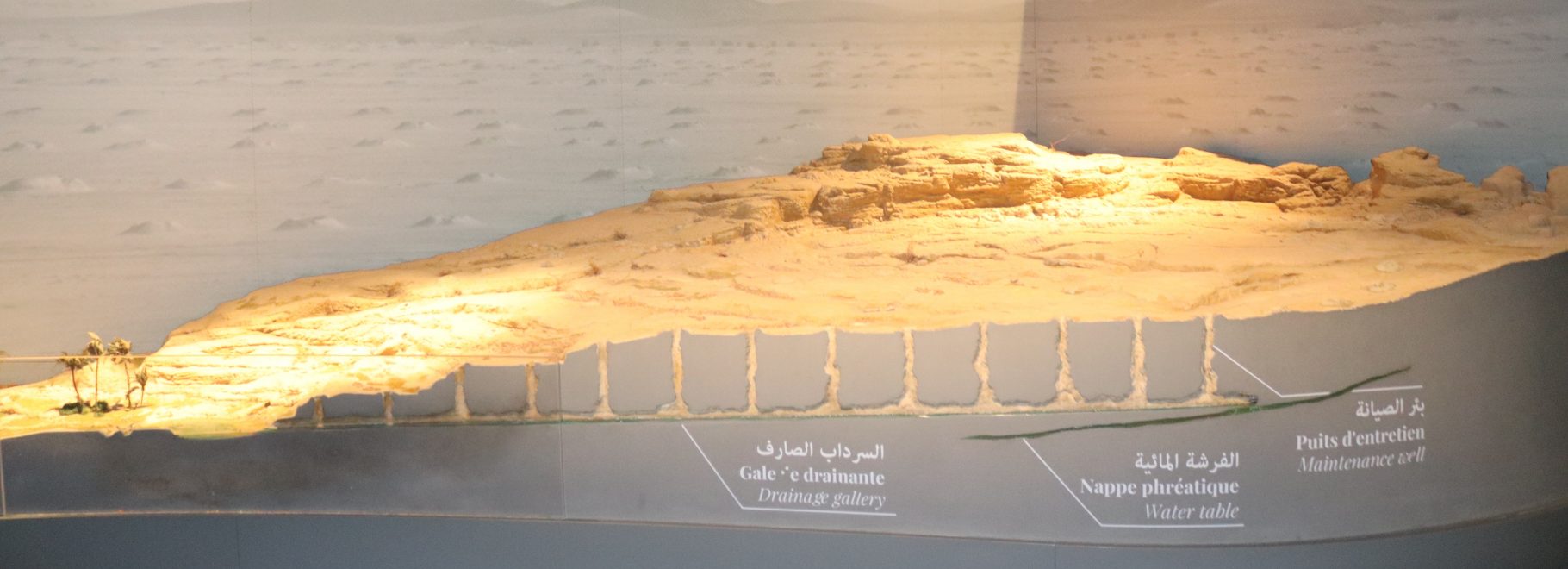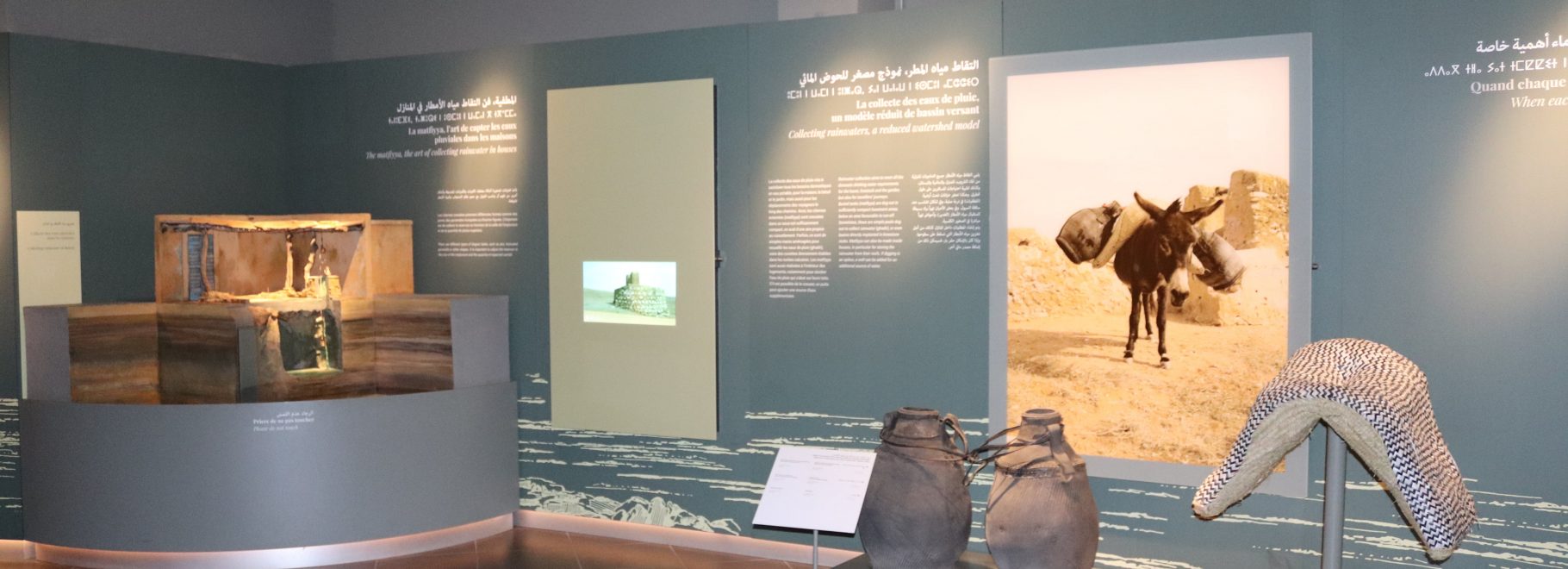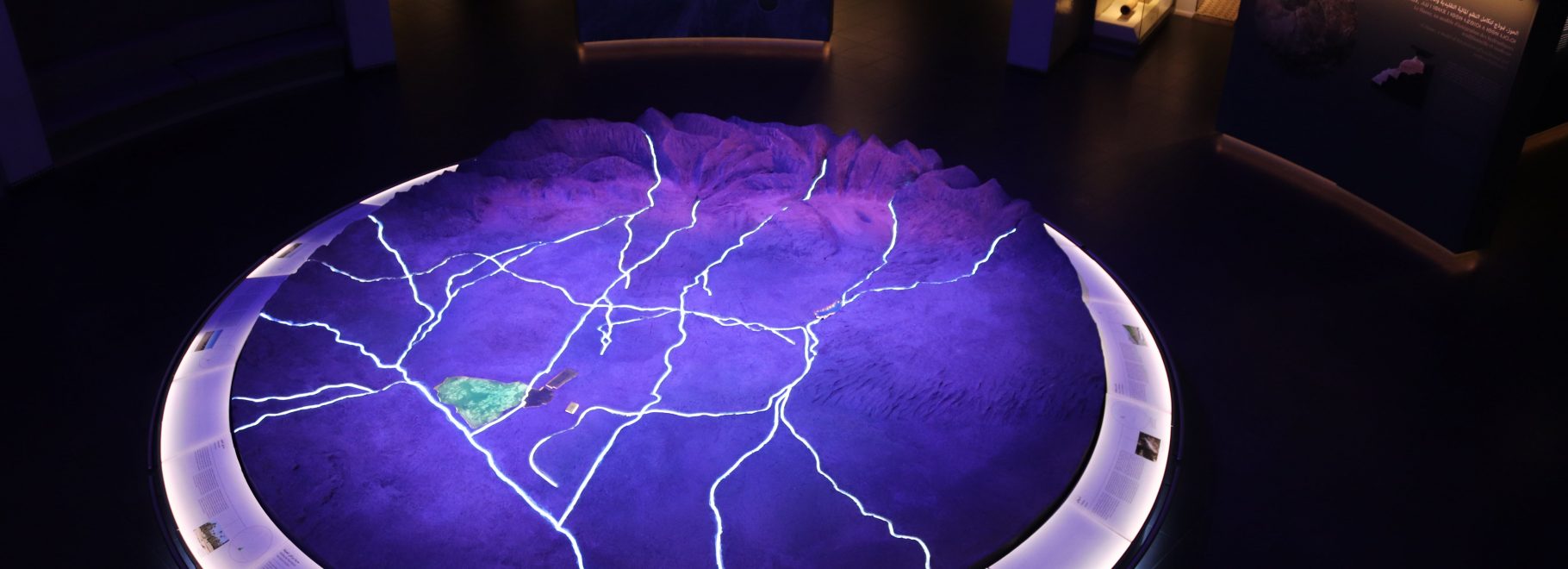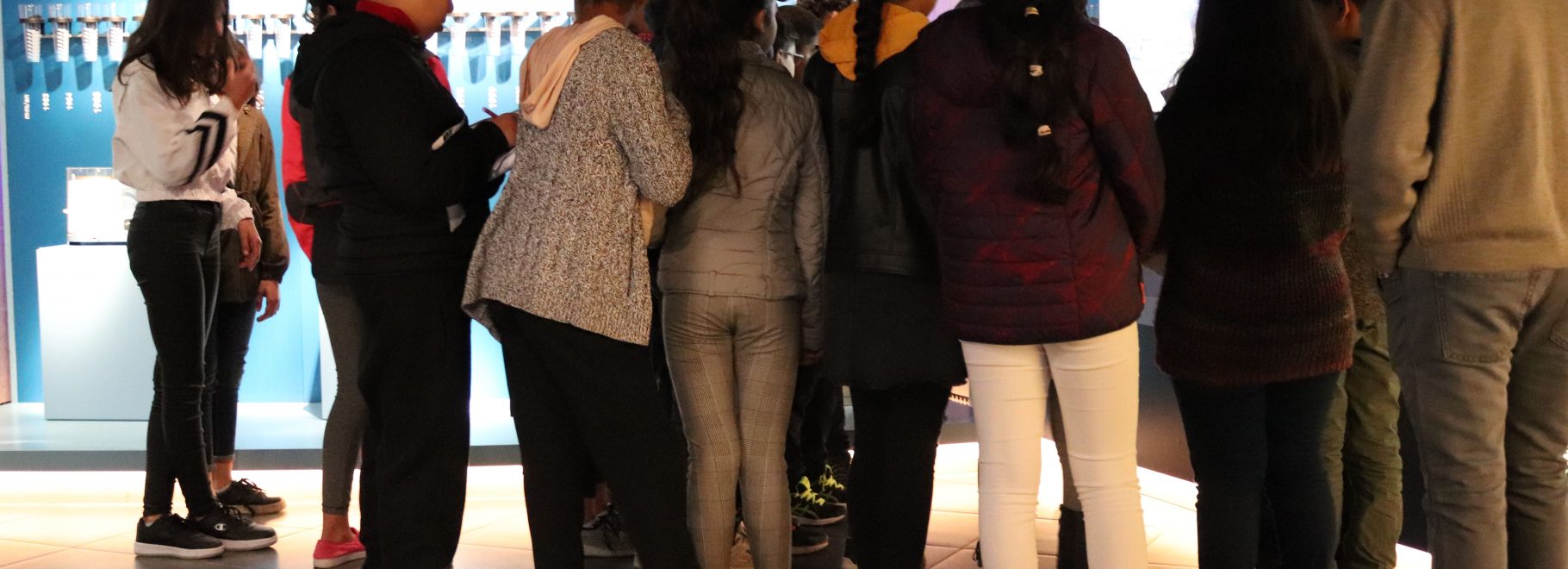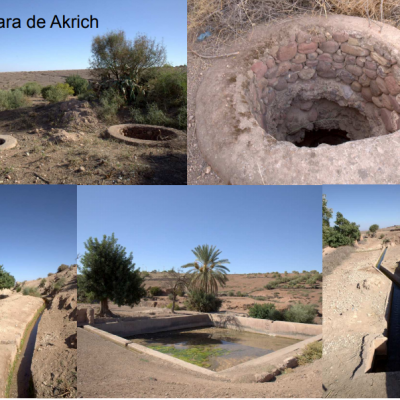The Museum of the Water Civilization in Morocco “Mohammed VI” in Marrakech is one of the most fascinating cultural site in relation to the water and one of the unmissable places in Marrakech. Due to the richness of its architecture, its presentation and the message it conveys – Humans and water in Morocco, renewed genius and tradition – through installations, mock ups, new technology used, Historic reconstruction and above all the unique atmosphere in which the visitor is immersed, the AMAN Museum will make you travel through the hydraulic adventure and its challenge in Morocco and will reveal all about the water management in Morocco and the Moroccan genius in the Entrepreneurship of this wealth.
With a surface area of 2000 m2 spread out on 3 levels, the permanent exhibition welcomes you to experience a journey through the hydraulic epic in Morocco. An exceptional scenography exposing objects, models, maps, interactive games… with a spectacular 360° projection
Level 1: 1st floor
The first level of the museum highlights the scientific side of water, the geographical influence on the climate and water and also represents the common law applied in Morocco
Level 2: Ground floor
The second level is dedicated to oasis water management and to celebrations and rituals related to water
Level 3: Basement
The 3rd level details the techniques of water abstraction, the water distribution and hydraulic revolution in Morocco. The last but not least, an impressive 360° video projections
Temporary Exhibitions
1. Temporary Exhibitions “Look on the palm of Marrakech”
The Museum Mohammed VI for the Civilization of Water in Morocco-Aman organizes a temporary exhibition under the theme “Look on the palm of Marrakech” by the photographer artist Mohamed Boussacsou from 30 March to 30 May 2019. The exhibition is the result of a long and meticulous work, which allowed the artist to grasp and reveal the aesthetics of the palm tree, through the cycle of seasons, from dawn to dusk. And now all the aesthetic manifestations of the palm reveal their secrets to the artist, revealing at the same time the relationships that the palm has with the light, the sky, the atmosphere and the degree of coloring of this tree with the shade. In addition to the aesthetic dimension, the exhibition captures the state of the palms, oscillating between beauty and misery. The exhibition challenges awareness of the danger that threatens this endangered natural heritage. Thus, the main purpose of this exhibition is to show the beauty of the palm tree, and to show its necessity in the eco-system of the oasis. On the visitor’s side, the exhibition aspires to educate the eye to look up, for better enjoyment of the horizon and to free the eye.
2. Temporary Exhibitions “Moroccan wildlife”
The Museum Mohammed VI for the Civilization of Water in Morocco-Aman invites you to discover the fauna of the kingdom “Moroccan wildlife” through the exhibition of the association of wildlife photographers of Morocco, between pure contemplation and vibrant advocacy. The exhibition will take place in the outdoor spaces of the museum, from 13 July to 13 September 2019. We aim, through this traveling exhibition, to show the splendor and beauty of Moroccan fauna through photos. This exhibition contains photos of birds, reptiles and mammals taken from all regions of Morocco by the members of our association (Moroccan Wildlife Photographers). By this action, we intend to encourage them to think about ways to preserve our rich natural heritage, which is extremely threatened by the human activities that represents a real danger for many animal species.



